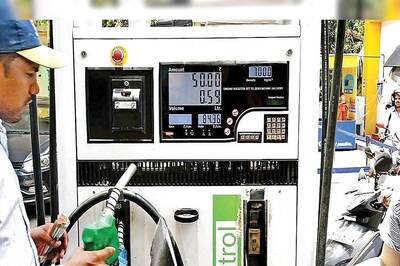
views
As Indian telecom operators prepare for the 5G launch in India, telecom carriers will need access to street furniture such as power poles and street lights, as well as similar utilities, to make it a commercial success in India, say experts.
This would allow carriers to create a denser infrastructure to supply high-frequency spectrum wireless connectivity services.
HOW IT WORKS
Telecom providers can install small cells on these poles and buildings to ensure that 5G coverage and signal strength are maintained throughout the metropolis. With the street furniture, the telcos can push the networks closer to the end-user.
According to reports, telcos may have to pay the Department of Telecommunications (DoT) Rs 200-300 a year to use street furniture. The rate would depend on the location and also if the areas are urban or rural.
The Telecom Regulatory Authority of India (TRAI) is running pilot tests on street furniture at Gujarat’s Kandla Port, Bhopal, the Bengaluru Metro Rail Corporation and Indira Gandhi International (IGI) airport. Kerala has already begun to deploy street furniture to improve user connectivity.
The Cellular Operators Association of India (COAI), a trade group, has lobbied the government to enable telecom companies to access street furniture.
The government has given telecom companies permission to begin sharing their infrastructure. This would be a significant boost because telecoms would no longer have to worry about investing in infrastructure in regions where their competitors already have a better framework. This would also reduce the time it takes for operators to deploy their networks.
EXPERTSPEAK
A tech analyst, Prabhu Ram, who is also the head of the Industry Intelligence Group at CyberMedia Research (CMR), earlier spoke to News18 regarding the usage of street furniture by the telcos in the backdrop 5G rollout in India.
He said: “5G represents a shift in cellular infrastructure. In the 4G LTE era, macro towers could support network coverage. As the number of devices continues to rise, providing effective 5G coverage and high data capacity in dense urban settings would become challenging. [And] This is where small cells come in.”
“Small cell networks will help overcome the short signal reach of higher frequency 5G radio spectrum and will contribute to increase 5G coverage, high data rates and low latencies,” he explained.
Additionally, he said: “The use of public street furniture assets, such as utility poles and traffic signals, among others, will help in accomplishing effective indoor and outdoor 5G coverage. It will also contribute to reducing CAPEX and time for effective roll-out by reducing the need to undertake greenfield deployment of towers for small cells.”
Read all the Latest Tech News and Breaking News here



















Comments
0 comment